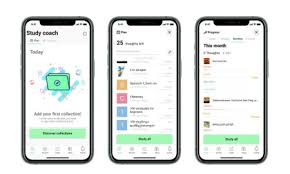Emerging methods in application design – By Aditya Abeysinghe

Agnostic methodology
Agnostic methodology is a development method used when an app is designed to work on several platforms. Several tools and technologies exist which can be used to create an app to be used with cross platforms. Usually, the user interface and the components used to determine the logic of functions of the app can be used with multiple platforms. The backend is usually in the form of an Application Program Interface (API) which is used to bridge the functionality of the app with a database.
Native methodology
Native methodology is a development method used when an app is designed to work only on a single platform. Tools used to design and test could operate only in one platform and executables of these apps can only execute in that platform. However, as most users use the same app with multiple platforms, the same app needs to be designed in multiple platforms. The major advantage of using native methodology is high user performance and user experience (UX).
 Comparison of methodologies
Comparison of methodologies
Native apps have more functionality for users than agnostic apps. Most libraries used for app design, development, and testing can be used only in native design method, i.e. in one platform, and cannot be used in other platforms. Therefore, some functionalities of apps that are not supported in multiple platforms are not used in agnostic apps. Native apps are also easily scalable due to this reason. Also, the UX, the interface and the performance of a native app is similar to the interface and UX of the operating system on which they are used.
However, agnostic apps are less costly to design, test and troubleshoot as the same app is designed to run on several platforms. Teams to design and test on several platforms are not required for an agnostic app as opposed to a native app. Agnostic apps are also faster to design and test as multiple apps need not be designed and tested. Also, apps are easily maintainable as only issues of a single app need to be fixed.
Choosing agnostic or native for design
Functions used in apps depend on the purpose of the app, users who use the app, and the versions of the operating system on which an app can be installed. Some apps do not provide support for lower versions of operating systems and thus do not support some functions which are deprecated. Also, some apps do not support some functions because they cannot access APIs which depend on services and resources of devices. Native apps are a better choice for these kind of issues where access to services and resources of the device and a variety of libraries to implement additional functions is needed.
Most large-scale businesses also design apps where UX is the key functionality. UX is one of the key elements used by users when choosing an app. Also, responsive time is important when an app connects with multiple remote services. Native apps are a better option when such functions need to be considered when designing an app.
Costs of designing an app will increase when an app needs to be designed and tested for each platform. Also, time taken to develop and time taken to maintain is higher for apps that can be used only on a platform on which they were designed. Using agnostic apps is a better option for startups with low budgets and for apps that have less functions.
Image courtesy: https://www.designrush.com/







